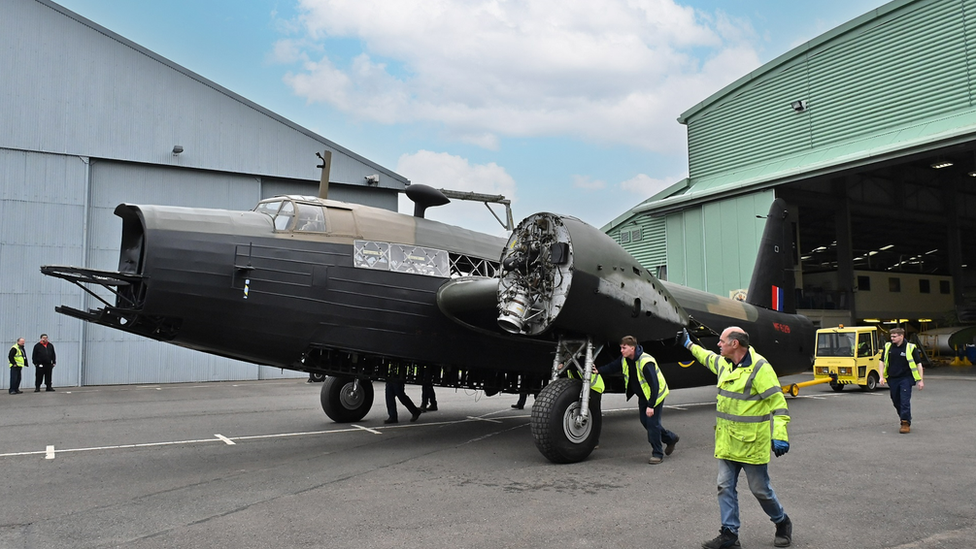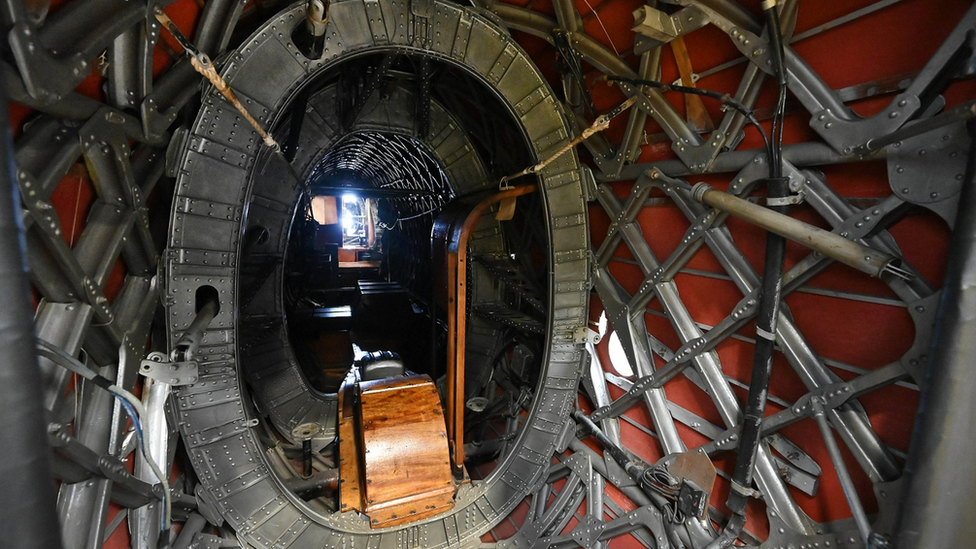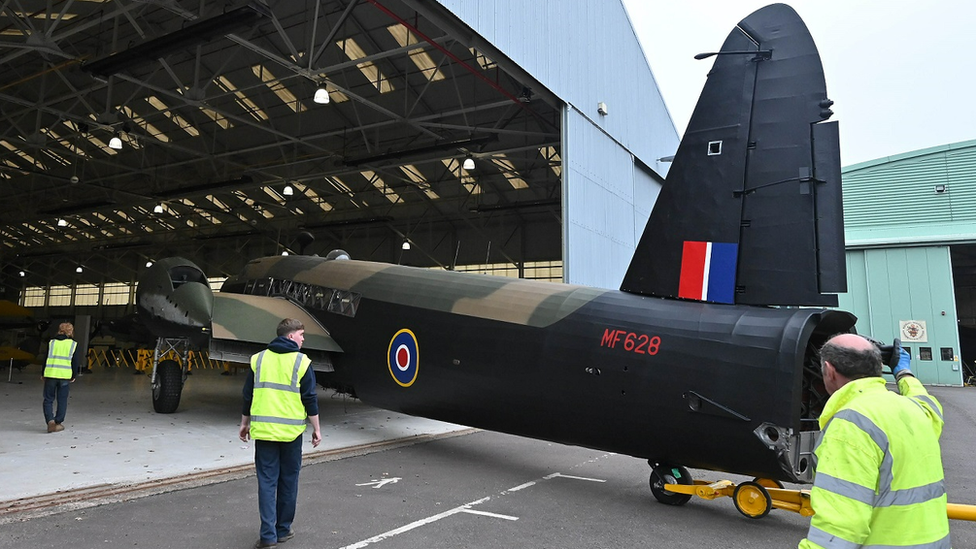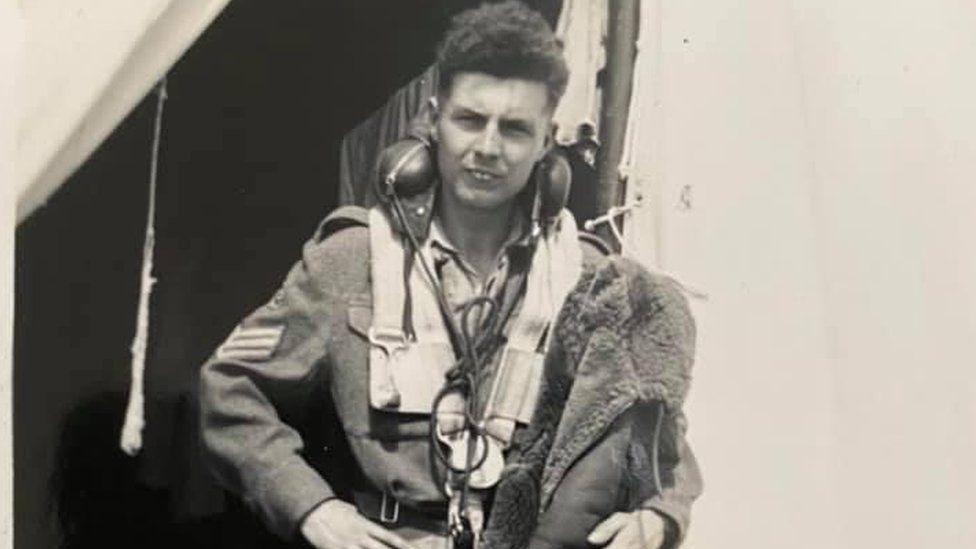Wellington bomber going on display after 10-year restoration
- Published

The Wellington was moved to the Midlands for extensive restoration in 2010
A Wellington bomber is going on public display after more than a decade of restoration work.
The Second World War aircraft is one of only two of its kind remaining, the RAF Museum Midlands said.
It will form the centrepiece of an upcoming Bomber Command exhibition, which opens at the site in Cosford, Shropshire, on 16 May.
The main fuselage has been moved into place and remaining parts will be attached over the coming weeks.
The museum's example of the Vickers aircraft was constructed in 1944 and served with No.1 Air Navigation Training School between 1949 and 1953.

The outer wings, engines, propellers and front turret will be reattached in the coming weeks

A team has taken more than a decade to restore the Wellington
This aircraft had been on display for 40 years at the museum's sister site in London and was moved to the Midlands in July 2010.
It went there for work to treat corrosion to its structure and a complete replacement of its fragile Irish linen outer skin.
It is one of just a pair of surviving Wellingtons to be complete with fabric skin, the museum says.
It adds the restoration project has been one of the largest undertaken by its team of technicians and volunteers.

The fuselage has been added to the craft
The Wellington was used as a night bomber in the early years of the Second World War, and by 1942 they were the most numerous aircraft in Bomber Command.
They were replaced later in the war by more advanced bombers, but continued to be used as training aircraft and served in North Africa, Italy, the Far East and Coastal Command, the museum said.

Follow BBC West Midlands on Facebook, external, Twitter, external and Instagram, external. Send your story ideas to: newsonline.westmidlands@bbc.co.uk, external
- Published28 March 2023

- Published23 March 2022

- Published21 August 2021

- Published18 August 2021
